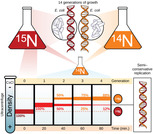
By the end of this section, you will be able to:Explain how the structure of DNA reveals the replication processDescribe the Meselson and Stahl experiments
- Subject:
- Applied Science
- Biology
- Life Science
- Material Type:
- Module
- Date Added:
- 07/10/2017

By the end of this section, you will be able to:Explain how the structure of DNA reveals the replication processDescribe the Meselson and Stahl experiments
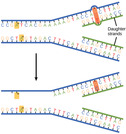
By the end of this section, you will be able to:Discuss the different types of mutations in DNAExplain DNA repair mechanisms

By the end of this section, you will be able to:Discuss the similarities and differences between DNA replication in eukaryotes and prokaryotesState the role of telomerase in DNA replication

By the end of this section, you will be able to:Explain the process of DNA replication in prokaryotesDiscuss the role of different enzymes and proteins in supporting this process

By the end of this section, you will be able to:Explain how the structure of DNA reveals the replication processDescribe the Meselson and Stahl experiments

By the end of this section, you will be able to:Describe the structure of DNAExplain the Sanger method of DNA sequencingDiscuss the similarities and differences between eukaryotic and prokaryotic DNA

By the end of this section, you will be able to:Explain transformation of DNADescribe the key experiments that helped identify that DNA is the genetic materialState and explain Chargaff’s rules



By the end of this section, you will be able to:Describe how changes to gene expression can cause cancerExplain how changes to gene expression at different levels can disrupt the cell cycleDiscuss how understanding regulation of gene expression can lead to better drug design
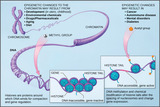
By the end of this section, you will be able to:Explain the process of epigenetic regulationDescribe how access to DNA is controlled by histone modification

By the end of this section, you will be able to:Understand RNA splicing and explain its role in regulating gene expressionDescribe the importance of RNA stability in gene regulation

By the end of this section, you will be able to:Discuss the role of transcription factors in gene regulationExplain how enhancers and repressors regulate gene expression

By the end of this section, you will be able to:Understand the process of translation and discuss its key factorsDescribe how the initiation complex controls translationExplain the different ways in which the post-translational control of gene expression takes place

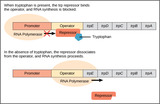
By the end of this section, you will be able to:Describe the steps involved in prokaryotic gene regulationExplain the roles of activators, inducers, and repressors in gene regulation

By the end of this section, you will be able to:Discuss why every cell does not express all of its genesDescribe how prokaryotic gene regulation occurs at the transcriptional levelDiscuss how eukaryotic gene regulation occurs at the epigenetic, transcriptional, post-transcriptional, translational, and post-translational levels
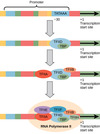
By the end of this section, you will be able to:List the steps in eukaryotic transcriptionDiscuss the role of RNA polymerases in transcriptionCompare and contrast the three RNA polymerasesExplain the significance of transcription factors


By the end of this section, you will be able to:List the different steps in prokaryotic transcriptionDiscuss the role of promoters in prokaryotic transcriptionDescribe how and when transcription is terminated